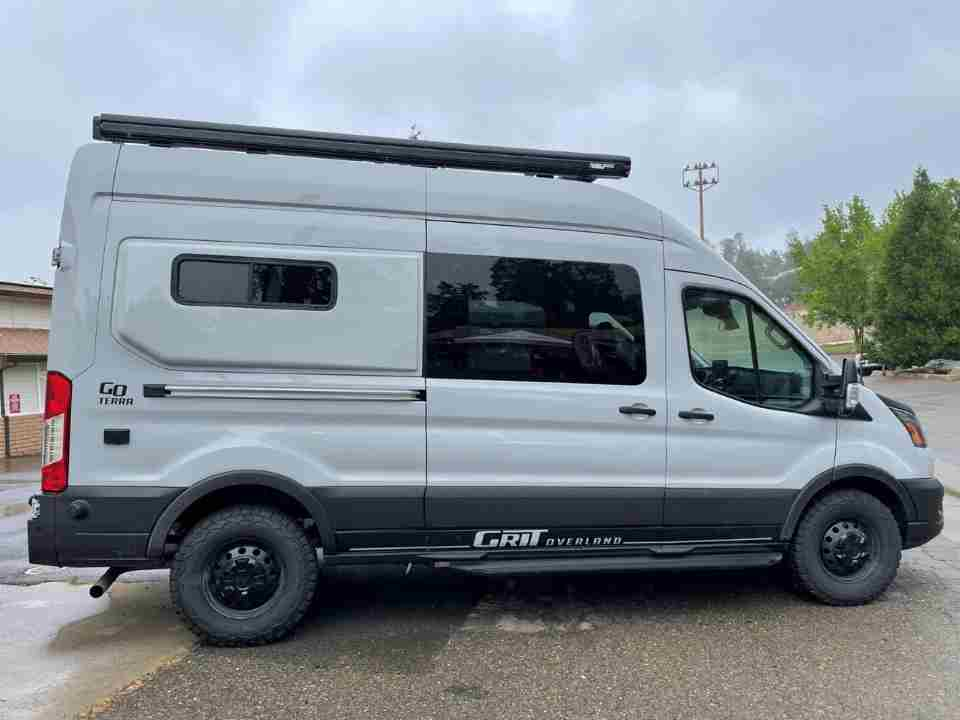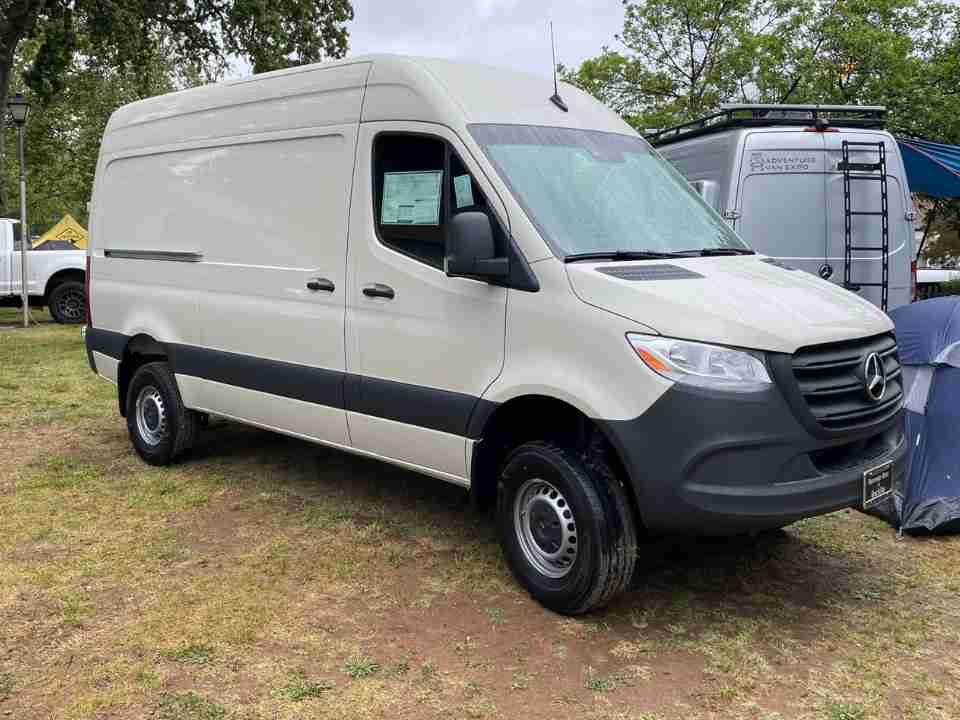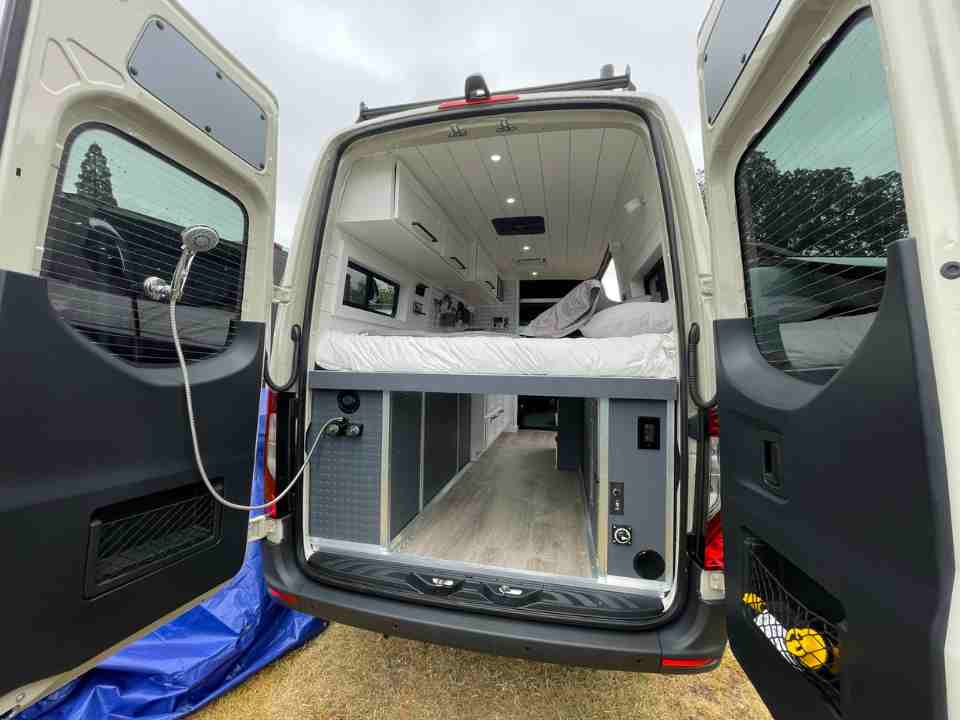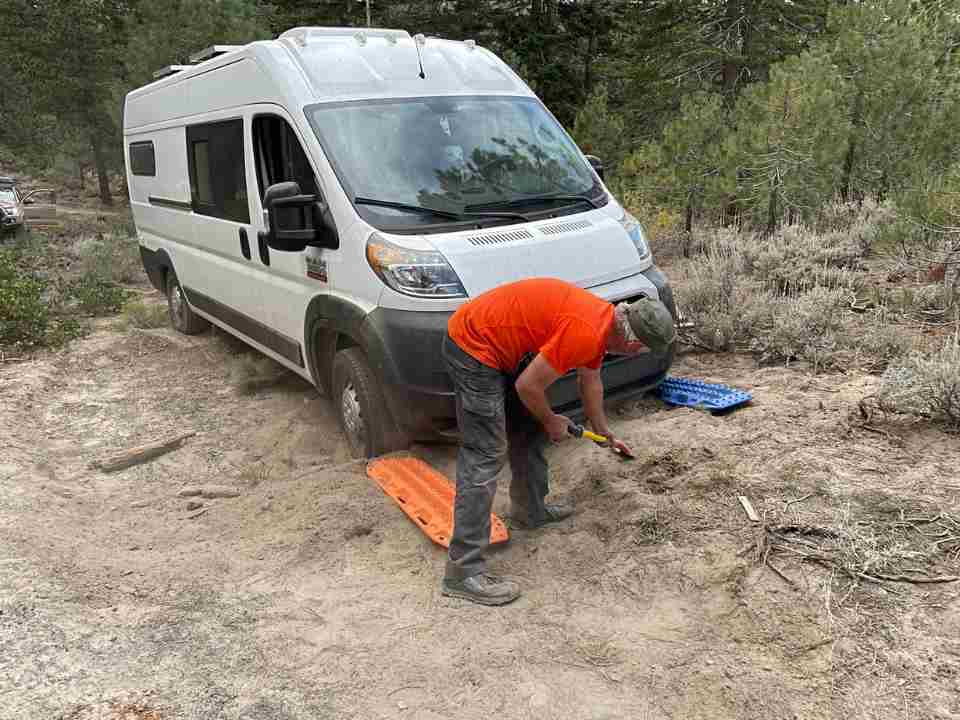Building a camper van can be a fun and rewarding DIY project, allowing you to create a unique and personalized living space on wheels. But you’re probably wondering, “What is the best van to make into a camper?”
The Ford Transit is an ideal van for camper build, it offers ample interior space, range of configurations, good fuel economy, reliability and widely availability for parts and service, making it perfect for full-time living or part-time travel.
In this article, we’ll discuss why the Ford Transit is the best van for a DIY build. We’ll also talk about some other good options for your camper van build.
Ford Transit

The Ford Transit is an excellent choice for a camper van build. Ford offers a variety of body styles with plenty of room for customizing, whether you are building a compact camper van or a luxury home on wheels. Ford offer many options that allow for a great deal of customization suitable for both small and large builds.
Additionally, the robust design and power-train can handle heavy loads. Plus it’s wide availability across the globe for parts and service, makes it perfect for full-time living or long-term travel.
Ford Transit has a good track record in terms of durability, reliability, and resale value, which makes it an excellent choice for a camper van build.
Its high roof and variety of body styles offer plenty of room for customizing. And, the robust design and power train can also handle heavy loads, making it ideal for camper van builds.
All types of Ford Transit vans are suitable for DIY van builds, as long as the van is in good condition and meets your specific needs and preferences. Here are some popular choices for DIY van builds.
Transit Van
The standard cargo van version of the Transit is a popular choice for DIY van builds. It offers ample interior space and can be configured with a variety of shelves, racks, and bins to suit different needs. The van is also available in different lengths and roof heights, which allows for a wide range of layouts and designs.
The Ford Transit comes in several size lengths and heights. The shortest van, the regular length, is 220 inches long. This van are available with the low or medium roof. The long and extra long length vans, 237″ and 263″ respectively, are available with either the high, low or medium roofs. Roof heights for the low, medium and high roofs and lengths are as follows:
| Van | Length | Interior Height |
| Regular length | 220″ (18.5 feet) | 56.9″ (4.74 feet) – low roof |
| Regular Length | 218″ (18.2 feet) | 72″ (6 feet) – medium roof |
| Long Length | 237″ (19.8 feet) | 56.9″ (4.74 feet) – low roof |
| Long Length | 236″ (19.7 feet) | 72″ (6 feet) – medium roof |
| Long Length | 236″ (19.7 feet) | 81.5″ (6.8 feet) – high roof |
| Extra Long Length | 263 (21.9 feet) | 81.5″ (6.8 feet) – high roof |
This means that you can get a van less than 20 feet long that you can stand in after it’s built out. That is, of course, if you’re not super tall.
Transit Trail
If you’re anxious to get off the beaten path, then the Ford Transit Trail is a good bet. Brand new in 2023, the Ford Transit Trail adds several new off-road features to the Ford van lineup. The Transit Trail is available in medium and high-roof options and includes an extended-length high-roof model.
Here are some of the features of the Transit Trail:
- 3.5-liter EcoBoost® V6 engine
- 10-speed automatic transmission
- 5-mode intelligent all-wheel drive
- 3.73 limited slip rear axle
- Integrated marker lamps and black HID headlamps
- Skid-plate style bumper
- Wheel arch cladding
- Heavy-Duty Trailer Package with up to 6,500-lb. towing capacity
- 30.5 inch all-terrain tires
- 3.5 inch body lift for improved ground clearance (2.5 inch lift kit))
- Pre-installed roof vent (optional)
- 4-way manual swivel driver and passeger seats
- Built-in 400-watt Inverter (optional)
- 12-inch touch screen
- 4-G wireless
- 31-gallon fuel tank (optional)
This camper was designed for the DIY camper van builder!
Transit Connect
The Transit Connect is a smaller version of the Transit van, which is designed for urban use. It’s also popular among DIY builders due to its compact size, fuel efficiency and versatility. Its compact size makes it a good option for smaller builds, or for those who have limited space to park their van.
It’s also a great choice for a stealth camper build because it has a compact and unassuming design, which makes it less likely to attract attention and helps it blend in with other vehicles on the road.
Additionally, the Transit Connect has a relatively low profile, which can make it less obtrusive when parked in public areas. Being a smaller vehicle and less eye-catching also make it easier to park on cities or residential area with less restrictions.
With its compact size, the Transit Connect can be converted into a stealth camper without requiring extensive modifications to the vehicle, which can help to keep the build cost low.
It’s relatively easy to work on and customize. The interior space is compact, which makes it simple to convert the cargo area into a cozy and comfortable living space.
Unfortunately, Ford is slated to discontinue the Transit Connect by the end of 2023.
Mercedes-Benz Sprinter

The Mercedes-Benz Sprinter is a popular choice for DIY camper van conversions. There are many advantages in choosing a Mercedes van for your camper build. Here are some of the advantages.
Durability
Mercedes vans are known for their durability and longevity, which can make them a good choice for a van that will be used for long-term travel.
Safety features
Many Mercedes vans come equipped with advanced safety features, such as electronic stability control, lane keep assist, and auto emergency braking. These features provide added peace of mind while on the road.
Comfort
Mercedes vans are known for their comfortable ride, which can make long-distance travel more enjoyable.
Luxury
Mercedes vans are often considered luxury vehicles, which can provide added amenities and comfort in your camper build.
Resale value
Mercedes vans tend to hold their value well, which can make them a good investment if you plan to sell the van in the future.
Brand reputation
Mercedes is a well-known and reputable brand, which can give you confidence in the quality and reliability of the van.
Sprinter Models

There are several models that are well-suited for van life builds. Here are some of the most popular options.
The Mercedes-Benz Sprinter 3500
My top pick for the Mercedes-Benz Sprinter for a van conversion is the 3500. This model is available in a high roof version, making it a great option for conversions that require additional headroom (and don’t we all want to stand up in our vans.)
One of the biggest improvements for this van in 2023 are the engine options. This van is available with three engine options:
- 2-liter turbo-charged gasoline engine
- 2-liter turbo-charged diesel engine
- 2-liter OM654 turbo-charged diesel engine
In 2023, Mercedes-Benz updated from a V6 to the OM654. This engine has more power and better fuel economy than the V6.
With this, you’ll get a 9-speed automatic transmission, instead of a 7-speed automatic transmission. This gives you more torque which gives more power from a standing start. If you really want a V6, you’ll have to buy a 2022 or older van.
The Mercedes-Benz Sprinter 4×4
In 2023, Mercedes-Benz discontinued the 4×4 van in favor of all-wheel-drive. In my opinion, this was a mistake on their part. Four wheel drive was the option that placed Mercedes-Benz above the competition, especially for van lifers who want to get off the beaten path. But if you don’t mind purchasing a 2022 and older vehicle, you can still find some vans with four-wheel-drive.
Downsides of the Sprinter
There are some potential downsides of using a Mercedes van for van life builds. We’ll discuss those next.
Price
Mercedes vans tend to be more expensive than other types of vans, which can make it harder to afford the initial purchase and any necessary conversions.
Fuel efficiency
Mercedes vans may not be as fuel efficient as other types of vans, which could make it more expensive to travel long distances.
Maintenance and Repair
Mercedes vans may require more expensive maintenance and repairs, which can add to the overall cost of owning the van.
If you aren’t in a large metropolitan area, it likely will be more difficult to find a repair station or dealership.
Size
Some models of Mercedes vans may be larger than other types of vans, which can make it harder to find parking spaces or navigate through tight spaces.
If you’re still trying to decide if a DIY camper build is cost effective, read this article that I wrote.
Ram Promaster
The Ram ProMaster is a popular option for DIY camper van builds due to its spacious interior, low price, and durable design. However, it’s my least favorite option. The biggest downside of the Ram Promaster is that it is front wheel drive.
Having said that, there are some features of the ProMaster that I think are worthwhile.
Here are some advantages of using a Ram ProMaster for a camper van build.
Interior space
You can purchase the van in three heights, including the Super High Roof Van, which is available on the 13.5 foot van. This version allows you to utilize the vertical space while still being able to fit in a standard parking spot.
The Ram ProMaster also has a high roof option, which provides ample headroom and space for standing inside the van. Additionally, its wide body design allows for a spacious and open floor plan.
Cargo capacity
The Ram ProMaster has a large cargo area, which can provide ample storage space for gear and supplies.
Fuel efficiency
The Ram ProMaster is known for its fuel efficiency, which can help reduce the cost of travel over long distances.
Engine
The Ram ProMaster is equipped with a 3.6 liter V6 engine paired with a 9-speed transmission.
Price
Like I mentioned, Ram ProMaster is relatively affordable compared to other van models, which can make it more accessible for a DIY camper van build.
Serviceability
The Ram ProMaster is known for its easy-to-service design, which can make it easier to maintain and less expensive to repair on the road.
Customization
The Ram ProMaster’s design is simple and boxy, which makes it a popular option for DIYers to customize and build out their own camper van.
Downsides
Like I mentioned, I’m not a fan of front-wheel-drive, especially for a camper van build. The reason is simple: I like to get off the beaten path and a front-wheel-drive vehicle is not the best choice for off-road driving.
Last summer, while camping, we pulled a Ram Promaster out of a precarious position. The van lifers we helped were parked on the shoulder of a dirt road in some softer dirt. The tires were spun so far into the dirt that we had to pull the van out from the rear end with our wench – traction boards on the front wheels just weren’t cutting it.

Like many front-wheel-drive vehicles, the Promaster has a lighter duty drive train than some of the other vans like the Mercedes-Benz Sprinter and the Ford Transit and Transit trail. The Ford Transit Connect is also a front-wheel-drive vehicle, but it’s much smaller and lighter.
Here are some other potential downsides of using a Ram ProMaster for a camper van build.
Noise
Some owners have reported that the Ram ProMaster can be quite loud inside, which can be uncomfortable for long-term travel.
Suspension
The Ram ProMaster’s suspension system may not be as smooth as some other vans, which can make for a rougher ride on bumpy roads.
Limited aftermarket support
While the Ram ProMaster is a popular choice for camper van builds, it may not have as much aftermarket support as other vans, which can make it more difficult to find parts and accessories.
No 4×4 option
The Ram ProMaster is not available in 4×4 version, which can limit its capability on off-road or snowy conditions. Additionally, there is not all-wheel-drive option available.
Ground clearance
The Ram ProMaster’s ground clearance is not as high as some other van models, which can make it more difficult to navigate rough or uneven terrain.
Not as luxurious
The Ram ProMaster is not considered as a luxury vehicle, which may not have some of the amenities of other van models.
Conclusion
Building a camper van is a big commitment. The best van for a DIY camper build is ultimately a matter of personal preference, as it depends on your specific needs and budget. However, some popular options among van conversion enthusiasts include the Ford Transit, Mercedes-Benz Sprinter, and the Ram Promaster. These vans offer a good balance of interior space, fuel efficiency, and durability, making them well-suited for conversion projects. Additionally, these models are also widely available, which means that there are plenty of aftermarket parts and accessories available to help with the build. Ultimately, it’s important to carefully research different options, and consider factors such as your budget, intended use, and desired features in order to find the best van for your DIY camper build.
